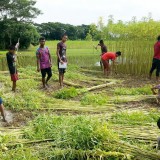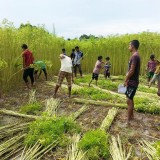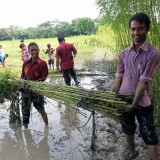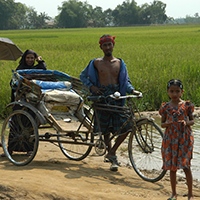The Golden Thread of Bangladesh
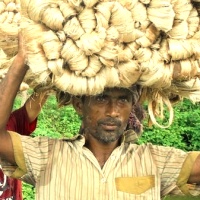
Behind nine hills and nine rivers, where the land is close to the sea and close to the roof of the world, the "golden thread" grows. Many people went there to get rich, but only some of them managed to find it. It grows in flooded marshes where there is a damp, hot climate and a bush of mosquitoes bothering any incoming visitors. The country is famous for its lush green rice fields and hard-working people. It is a Bengali country, and no one calls the golden thread differently than...
Somehow, the fairy tale "The Golden Thread" might start, or jute. Yes, jute is a fabulous "golden thread" that we will talk about today. It is obtained from the bark of a plant called jute, which grows up to 3 meters height and has no branches. It is in humid tropical climates and flooded marshes at 20-40 °C and 70-80% of relative humidity. And that is precisely the environment of southern Bangladesh, where the jute grows literally from the water. Thanks to this crop, Bangladesh becomes the second largest producer of jute over the world, right behind India.
How is the golden thread grown...
Our students at the KMMS school have also experiences with growing and cultivating jute. The school owns lands suitable for cultivation of "golden thread" within 40 minutes of walk from their building. Students say about their work for the school: "Every year we plant the jutters and watch their growth till the harvest. We know the whole process of cultivation and processing. It is not a thing we have just learned from books. It is our job and we help our school." In this way, the school receives some money for its running. Today, we bring you some photos from the harvest, but you will surely be interested in how jute is grown and what it is used for.
Seeds are sown at the turn of April and May in well-sown and fertilized land. Small plants are visible in a few days and need very fine care. Within three months the jute grows up and then it is time for harvesting. Boys in a role of "guys from marshland" (a name of a Czech famous song) cut the plants and bind them into the parcels which are then taken to the main road. Those parcels are loaded there on a trailer and transported to a river. The jute is unloaded from the trailer and dived into water for a few days. The stalks rot in the water and the "golden threads" are separated from the wood, which are then washed, dried, sorted and bundled. These are then sold (even to the stores) for further processing.
...and what it is used for
Jute is used for making clothes, scarves, paper, ropes and other useful things. Its leaves are edible and cooked in many ways. Stalks resemble a cork and can be used as fuel, for building fences or roofs. Jute has a golden colour. Due to its significant source of income from the international trade, it is called "the Golden Thread of Bangladesh".
